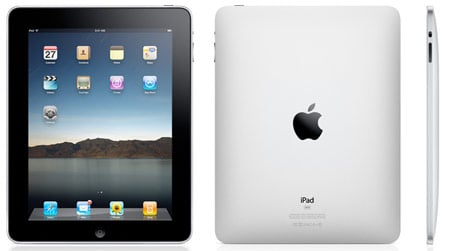But those tablets were, putting it simply, way ahead of their time. Most were very bulky (some nearly 2" thick), screens were generally low-res, battery life was abysmal and Windows XP simply was not optimized for touch. It felt like manufacturers were shoving an operating system that was designed from the ground-up to be used with a mouse and keyboard into a device with neither, and then they all wondered why no one wanted to pay more for the things than the average notebook. Users simply saw no real benefit in using a tablet over a laptop, and they definitely didn't see the need in paying more for less convenience. For years, the tablet PC lived on primarily in two places: hospitals and in the wild. Panasonic kept a Toughbook Tablet or two alive for years since it was such a great machine in the field, and obviously medical charting works very well on a tablet-styled device. But consumers? Most simply ignored them and moved on.
A Video Preview - Be sure to check out our in-depth analysis on the pages ahead...
But in early 2010, something different happened. In response to well over a year of rumors, Apple confirmed that most of them were true by launching the iPad at their "Latest Creation" event in California. The response was something akin to the original iPhone debut: oohs, ahhs and a new world of possibilities thanks to one huge card that no one else really has access to: the App Store. This past weekend, the iPad shipped in the United States (international destinations are still waiting), and the company managed to sell over 300,000 of them without ever setting foot in the tablet world before this. As a means of comparison, Apple "only" sold 270,000 or so iPhone units during that device's first day on the market. The tablet launched at a time when few other consumer-facing tablets were around, though we know for a fact that companies like Asus and HP are planning a number of rival devices in the coming months. HP's Slate is likely to be one of the major "iPad killers" out there, but Apple has a big advantage over those tablets that are still on track for production: the iPad is out now, and there's a lot of steam behind it. For now, let's take a look at the hardware within:
|

|
|
Apple iPad (Wi-Fi) Tablet |
|
Specifications and Features (as tested) | |
- Apple A4 SoC @ 1GHz; Manufactured by Samsung
- Undisclosed RAM; Reports Suggest 256MB
- 9.7 inch IPS LCD; LED backlit; Multi-Touch Enabled
- Undisclosed Graphics
- 16GB/32GB/64GB Flash Storage
- 802.11a/b/g/n Wi-Fi
- Bluetooth 2.1 + EDR
- Digital Compass
- No Webcam
- Support for 1024 by 768 pixels with Dock Connector to VGA Adapter; 576p and 480p with Apple Component AV Cable; 576i and 480i with Apple Composite AV Cable
- Dock Connector Port
- Headphone (3.5mm) Input
- Built-In Speaker
- Microphone
- Dock Connector To USB Cable Included
- 10W USB Power Adapter Included
- Non-Removable 25-watt-hour Rechargeable Li-ion Battery
- 9.56" x 7.47" x 0.5" (Dimensions)
- 1.5 Pounds
- iPhone OS 3.2
- Price (starting): $499
- 1-Year Warranty
|

|
Many people are wondering if all of the hype surrounding the iPad is deserved. How could a tablet with no integrated USB port, SD card slot, camera or multi-tasking capabilities be worthy of all this praise? And why didn't the tablets of 2003 see this kind of positive reaction? Much like the iPod touch and iPhone, Apple has a deadly card that no other company has, and that's the continually growing App Store, which basically enables the iPad to do more on day 2 than it could on day 1. This type of "growing ability" allows the iPad to be viewed more for what it could be one day than what it is today. But is the existing unit worth a purchase with so much innovation coming from so many other companies in the next few months? Join us in the coming pages as we dissect Apple's first (and only, thus far) tablet during our full review...








